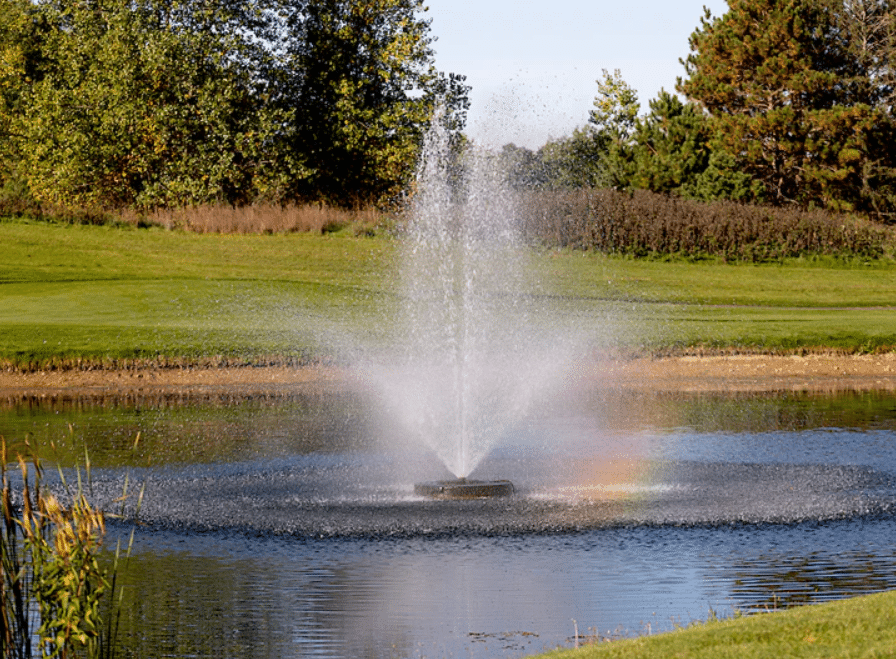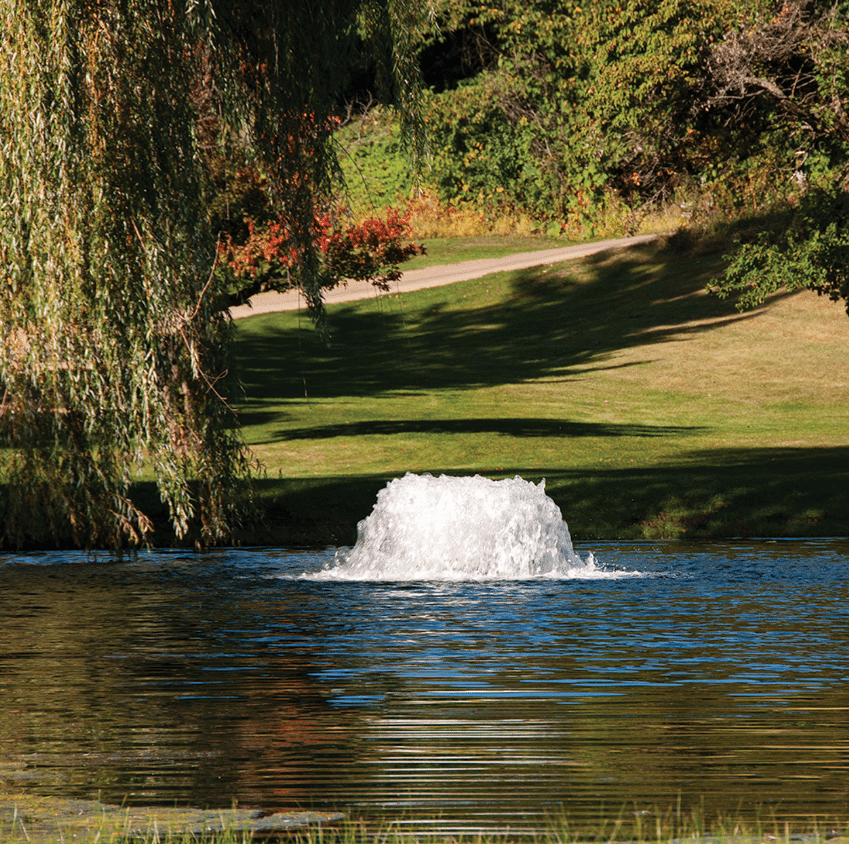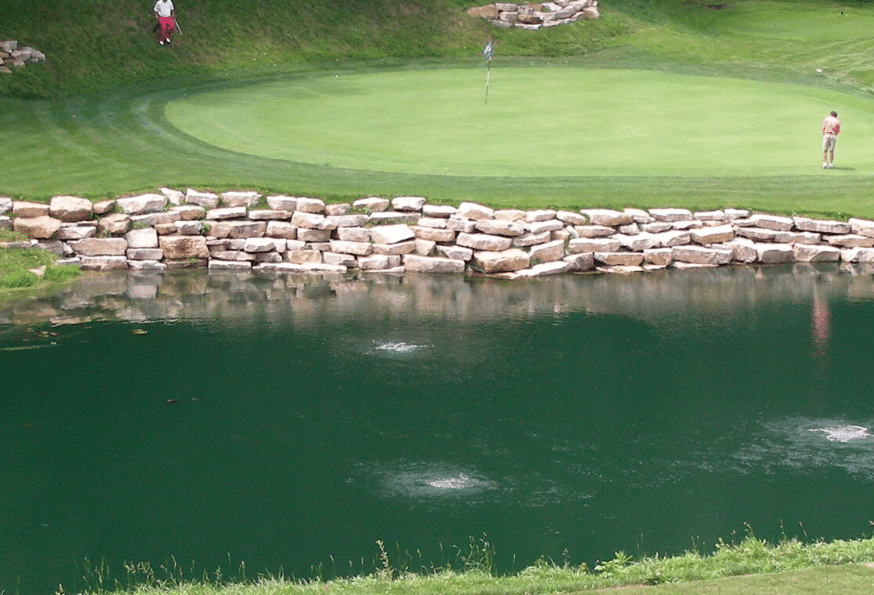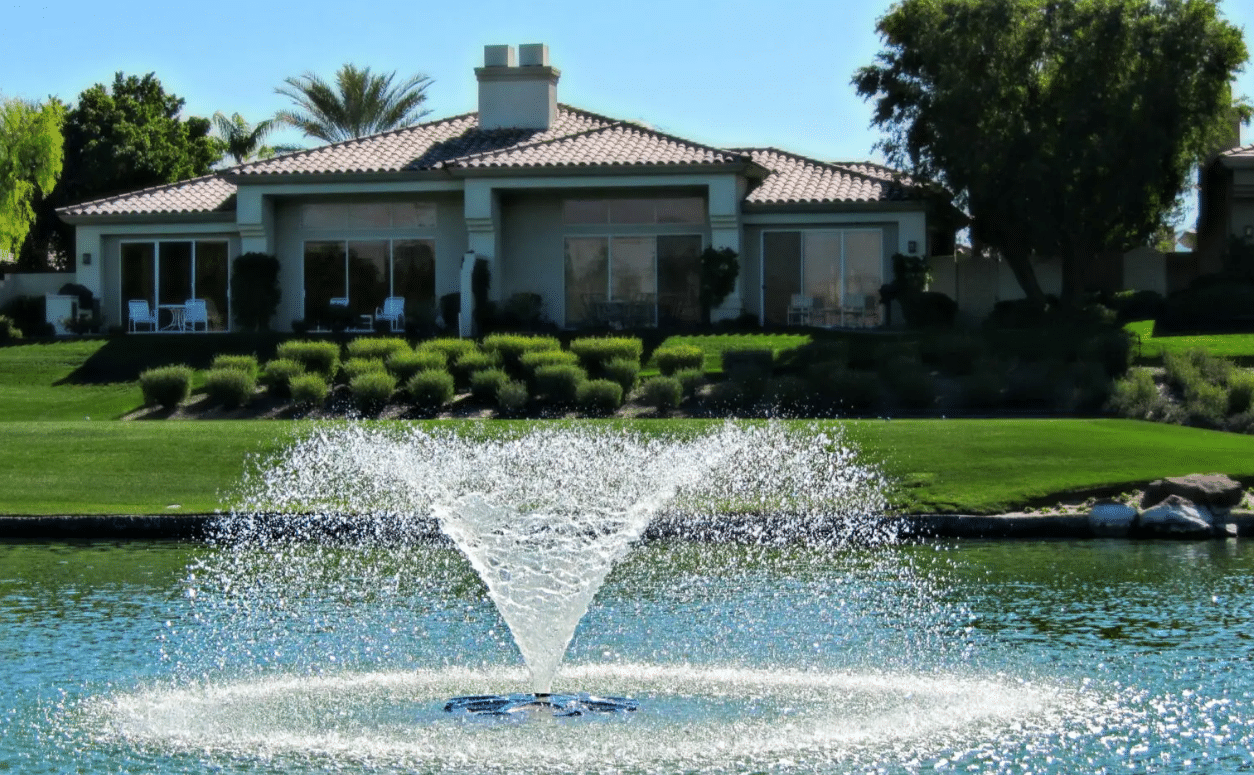Imagine having a serene lake on your property—a peaceful retreat where you can escape, relax, and connect with nature. However, to preserve the beauty and health of this natural oasis, proper care is essential, and that begins with aeration.
Aeration is crucial for maintaining water quality, as it ensures the lake has a healthy level of dissolved oxygen (DO). This process infuses oxygen into the water, helping to break down decaying vegetation and excess nutrients that can throw the ecosystem out of balance.
What Is the Best Way to Aerate a Lake?

The most effective method for aerating a lake is through an aeration system. Two of the most widely used options are surface aeration and subsurface aeration. Both systems efficiently circulate and oxygenate water when properly designed and scaled to meet the lake’s size and specific needs.
Surface Aerators
Surface aerators are floating pumps that propel large volumes of water into the air, where it splashes back down, creating a continuous cycle of oxygenation. This agitation helps to circulate oxygen throughout the lake, keeping dissolved oxygen (DO) levels at their peak.
Surface aerators are highly effective at maximizing DO levels, making them an ideal solution for maintaining a healthy aquatic environment. Their ability to efficiently oxygenate large areas of water helps break down organic matter and control nutrient buildup, promoting a balanced and thriving lake ecosystem.
These pumps also rotate the upper layer of water by creating a suction that can pull water from about 1.2 metres below the surface. This upward pull, combined with the dispersive effects of the aerator’s spray, circulates the top layer of water, ensuring oxygen is uniformly distributed.
Because of the strong suction generated, surface aerators are best suited for lakes deeper than 1.5 metres. In shallower waters, the suction could stir up sediments, leading to turbidity issues and potentially clogging the aerator’s protection screen with debris. In deeper lakes, however, this system works efficiently without disturbing the sediment, maintaining clear water and promoting a healthy lake environment.
In addition to aeration, surface aerators can offer a fountain display. Nowadays, you can find floating lake pumps that offer a range of spray patterns, from subtle to majestic. Beyond improving water quality, floating lake pumps add charm and visual interest to the landscape, boosting the overall curb appeal of your property.
Pros of Surface Aerators

- Portable: Surface lake aerators float on the water and are anchored by moorings connected to onshore anchors. This design makes moving the aerator quite easy; you just detach it from its moorings and relocate it to the new spot.
- Simple Installation: These aerators don’t need a subsurface to be installed. No draining cells are required for placement, they can be secured with moorings, connected to the electrical cables, and they’re ready to operate.
- Effective in Shallow Water: Surface aeration occurs precisely at the surface, so in shallow water, the entire water column is more effectively affected.
- Less Impacted by Surfactants: Surfactants create a barrier at the air-water interface that hinders oxygen transfer. These aerators counter this by pushing bubbles into the water and agitating them with a propeller, reducing the surfactants’ impact.
Cons of Surface Aerators
- Ineffective in Deep Water: Since aeration occurs only at the surface, deeper water columns receive minimal or no treatment, leading to the accumulation of solids that remain largely unaffected by the aerator. While adding draft tubes can provide some improvement, the aerator’s horizontal area of influence across the surface remains quite limited.
- Challenges in Cold Weather: In cold conditions, water stirred up by surface aerators can freeze when exposed to the air. The combination of splashing water, freezing rain, and snow increases the risk of motor failure during cold weather.
Sub-Surface Aerators
Sub-surface aerators work by using an air compressor to deliver pressurised air to diffusers located at the bottom of the lake. These diffusers release tiny air bubbles that rise to the surface, accomplishing two key tasks for pond management: increasing the amount of dissolved oxygen in the water and creating a buoyant effect that promotes water circulation.
The smaller the air bubbles produced, the more efficient the system becomes. A higher density of microscopic bubbles provides a larger surface area for water to interact with, allowing more oxygen to diffuse into the water. This enhanced diffusion is critical for maintaining optimal water quality.
However, proper lake depth is essential for installing a sub-surface aeration system. The upward movement of water created by the bubbles can disturb sediments in shallow areas, leading to cloudy or foggy water. To avoid sediment disruption and ensure optimal performance, sub-surface aerators are best suited for deeper lakes.
Pros of Sub-Surface Aerators

- Efficient Oxygen Distribution: Sub-surface aerators efficiently introduce oxygen directly into the water, promoting healthy water by reducing dead zones in lakes.
- Improved Water Circulation: They enhance water circulation throughout the body of water, which helps to eliminate thermal stratification and distribute nutrients evenly.
- Aesthetic Appeal: Since they operate below the surface, sub-surface aerators don’t create surface disturbances, making them ideal for maintaining the natural look of the water.
- Quiet Operation: Sub-surface aerators are typically quieter than surface aerators, reducing noise pollution and making them suitable for residential areas or locations requiring minimal disruption.
Cons of Sub-Surface Aerators
- Initial Cost: Sub-surface aerators can be more expensive to purchase and install than surface aerators, particularly in large or deep water bodies.
- Maintenance: These systems can be more challenging to maintain since components are submerged, requiring specialized equipment or repairs.
- Installation Complexity: Installing sub-surface aerators can be more complex and time-consuming compared to surface aerators, especially in larger bodies of water.
- Sediment Disturbance: In certain environments, sub-surface aerators can stir up sediments from the bottom, potentially leading to turbidity or the release of nutrients that can encourage algae growth.
Solar-Powered Aeration Systems

Both surface and sub-surface aeration systems typically run on electricity. However, for lakes in remote or hard-to-access areas, solar-powered aeration systems offer an eco-friendly and cost-effective alternative. These systems eliminate the need for extensive excavation and power line installation, while also reducing ongoing energy costs.
Though solar-powered systems come with backup batteries, they may face challenges during extended periods of cloudy weather or nighttime operation.
To ensure optimal performance, it’s crucial to position them in areas free from shading by trees or other obstructions. Proper placement will maximize sunlight exposure, making solar aeration a viable and sustainable option for off-grid locations.

